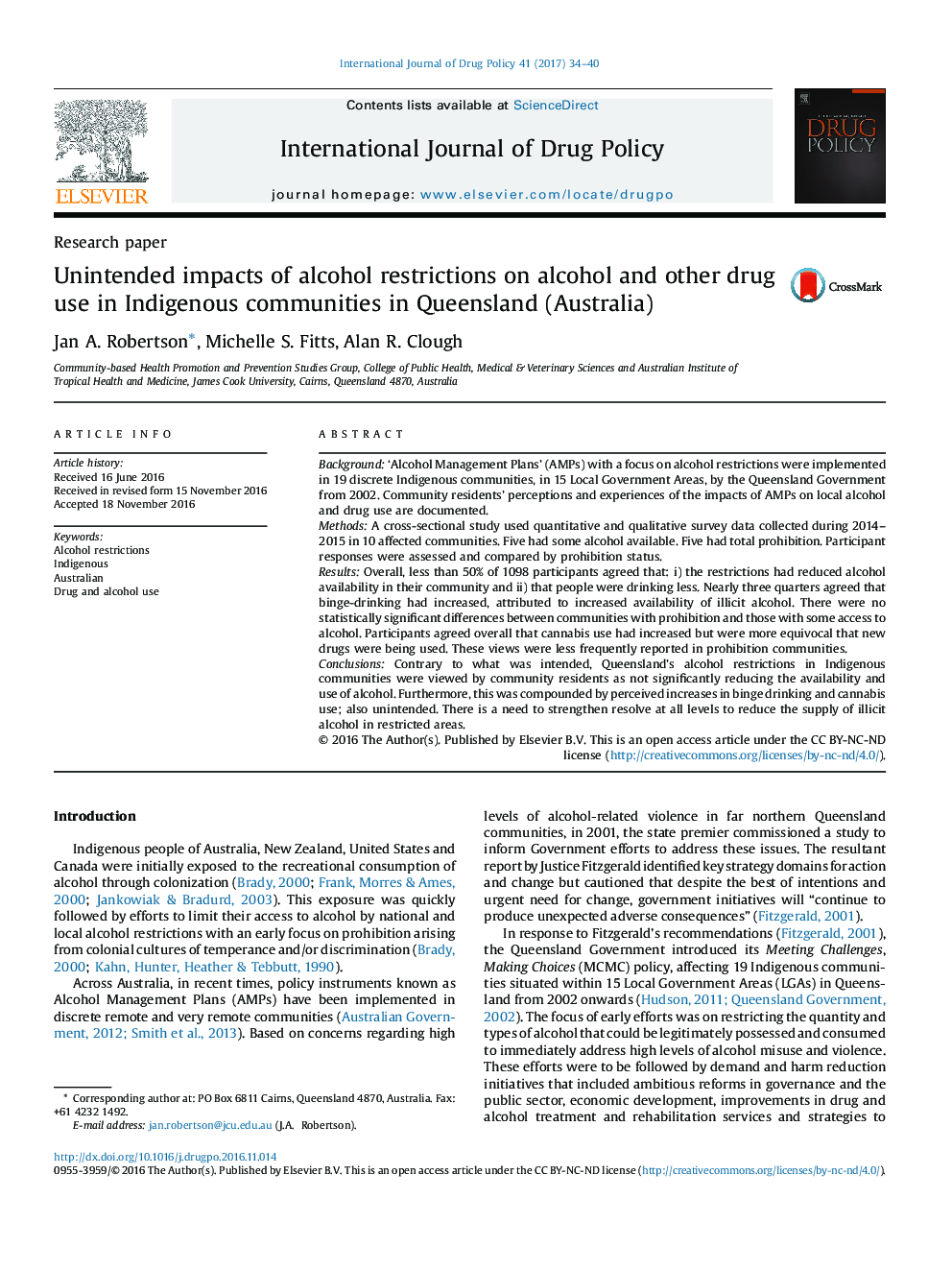| Article ID | Journal | Published Year | Pages | File Type |
|---|---|---|---|---|
| 5120726 | International Journal of Drug Policy | 2017 | 7 Pages |
Background'Alcohol Management Plans' (AMPs) with a focus on alcohol restrictions were implemented in 19 discrete Indigenous communities, in 15 Local Government Areas, by the Queensland Government from 2002. Community residents' perceptions and experiences of the impacts of AMPs on local alcohol and drug use are documented.MethodsA cross-sectional study used quantitative and qualitative survey data collected during 2014-2015 in 10 affected communities. Five had some alcohol available. Five had total prohibition. Participant responses were assessed and compared by prohibition status.ResultsOverall, less than 50% of 1098 participants agreed that: i) the restrictions had reduced alcohol availability in their community and ii) that people were drinking less. Nearly three quarters agreed that binge-drinking had increased, attributed to increased availability of illicit alcohol. There were no statistically significant differences between communities with prohibition and those with some access to alcohol. Participants agreed overall that cannabis use had increased but were more equivocal that new drugs were being used. These views were less frequently reported in prohibition communities.ConclusionsContrary to what was intended, Queensland's alcohol restrictions in Indigenous communities were viewed by community residents as not significantly reducing the availability and use of alcohol. Furthermore, this was compounded by perceived increases in binge drinking and cannabis use; also unintended. There is a need to strengthen resolve at all levels to reduce the supply of illicit alcohol in restricted areas.
